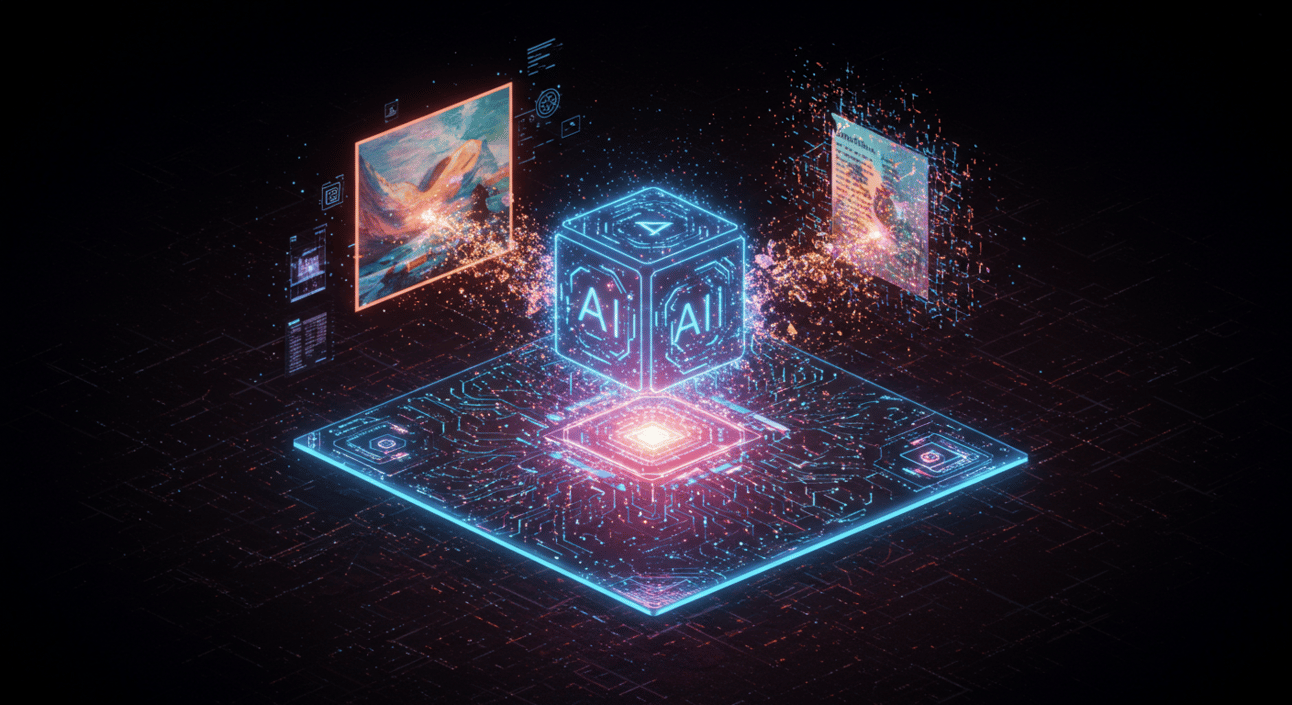- Digital Brain
- Posts
- Generative AI and the Future of Creativity: Redefining Art, Writing, and Design
Generative AI and the Future of Creativity: Redefining Art, Writing, and Design

Generative artificial intelligence is no longer a futuristic promise; it is a reality that is fundamentally reshaping the creative landscape. Tools such as ChatGPT for text, Midjourney for images, and Sora for video are democratizing creation and challenging our traditional conceptions of authorship and originality. But what does this really mean for artists, writers, designers, and musicians?
What is Generative AI and How Does It Work?
At its core, generative AI is a type of artificial intelligence capable of producing new content—whether text, images, audio, or video—from existing data. It learns patterns, styles, and structures from vast data sets and then uses that knowledge to generate something completely new, often indistinguishable from what would be created by a human.
Impact on Different Creative Fields:
* Writing and Content: ChatGPT and other LLMs (Large Language Models) are transforming content production. They can generate drafts of articles, emails, scripts, ideas for marketing campaigns, and even poetry. This does not replace the human writer, but elevates them to an editor, curator, and strategist, focusing on nuance, tone, and the final message.
* Art and Visual Design: Tools such as Midjourney, DALL-E, and Stable Diffusion allow anyone with an idea and a prompt (text command) to create stunning images in seconds. Graphic designers can quickly prototype ideas, artists can explore new styles, and illustrators can generate endless variations of a concept. The challenge and opportunity lie in refining the prompts and curating the results to express a unique artistic vision.
* Music and Audio: Generative AI is composing melodies, creating arrangements, and even generating realistic synthetic voices. Musicians can use these tools to overcome creative blocks, experiment with new genres, or produce custom soundtracks in a fraction of the time.
* Video and Animation: The emergence of models such as OpenAI's Sora promises to revolutionize video production, enabling the creation of complex, realistic scenes from textual descriptions. This has massive implications for filmmakers, animators, and content creators, opening doors to visual narratives previously unattainable on smaller budgets.
The Future of the Creative Professional:
Far from being an existential threat, generative AI is a powerful tool that expands human capabilities. Creative professionals will not be replaced by AI, but rather by other creative professionals who know how to use AI.
The focus will shift from manual execution to curation, direction, and refinement. The ability to formulate effective prompts, discern what is good, and infuse a human and strategic perspective into AI-generated results will be the new currency of value. Human creativity, with its intuition, emotion, and ability to tell meaningful stories, will remain irreplaceable.
Conclusion:
Generative AI is an invitation to experiment and reinvent. Those who embrace this technology, learning to integrate it into their creative processes, will be at the forefront of the next wave of innovation. Prepare for a future where creativity is amplified, and the boundaries of what is possible are constantly expanded.
---